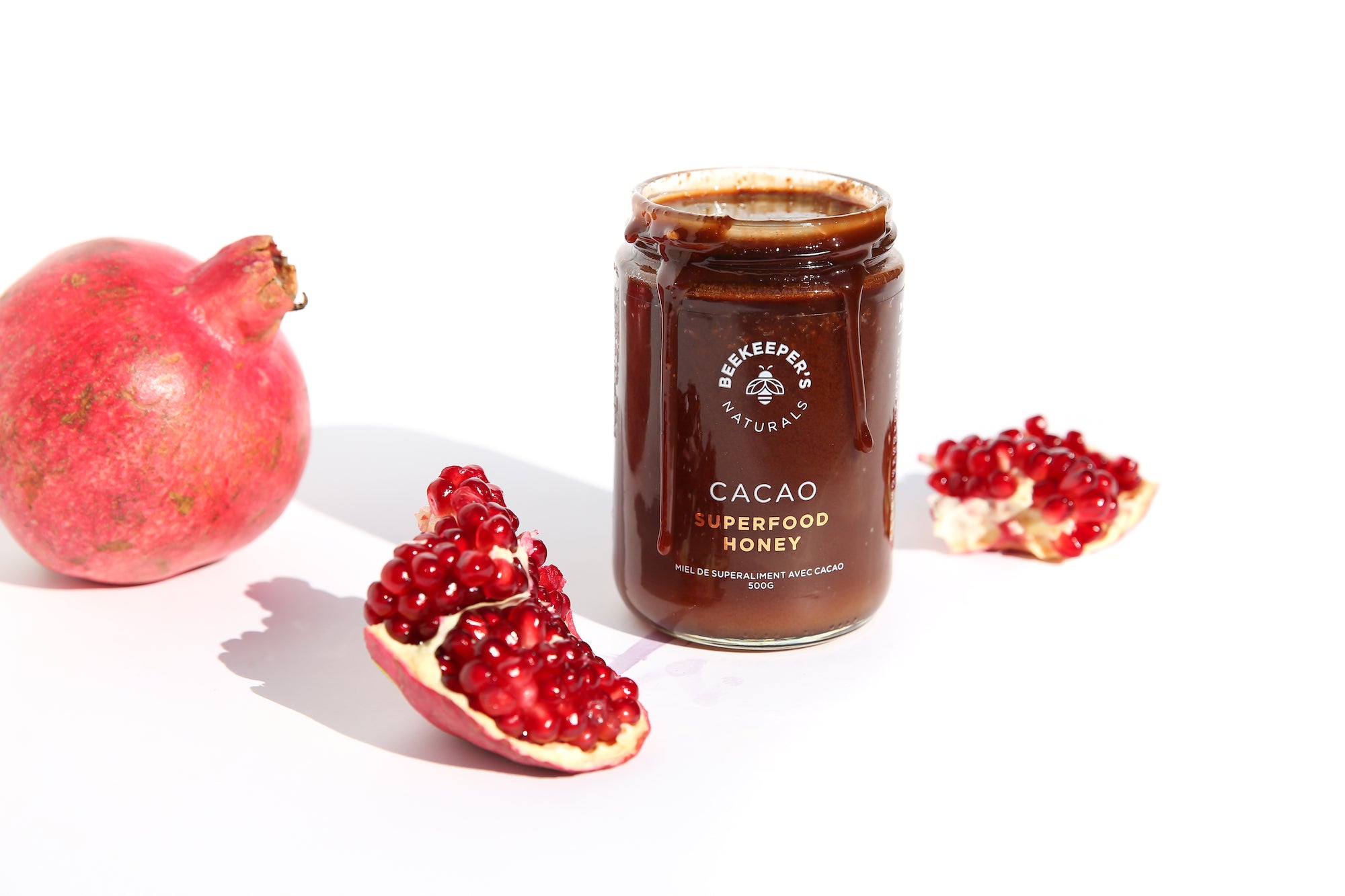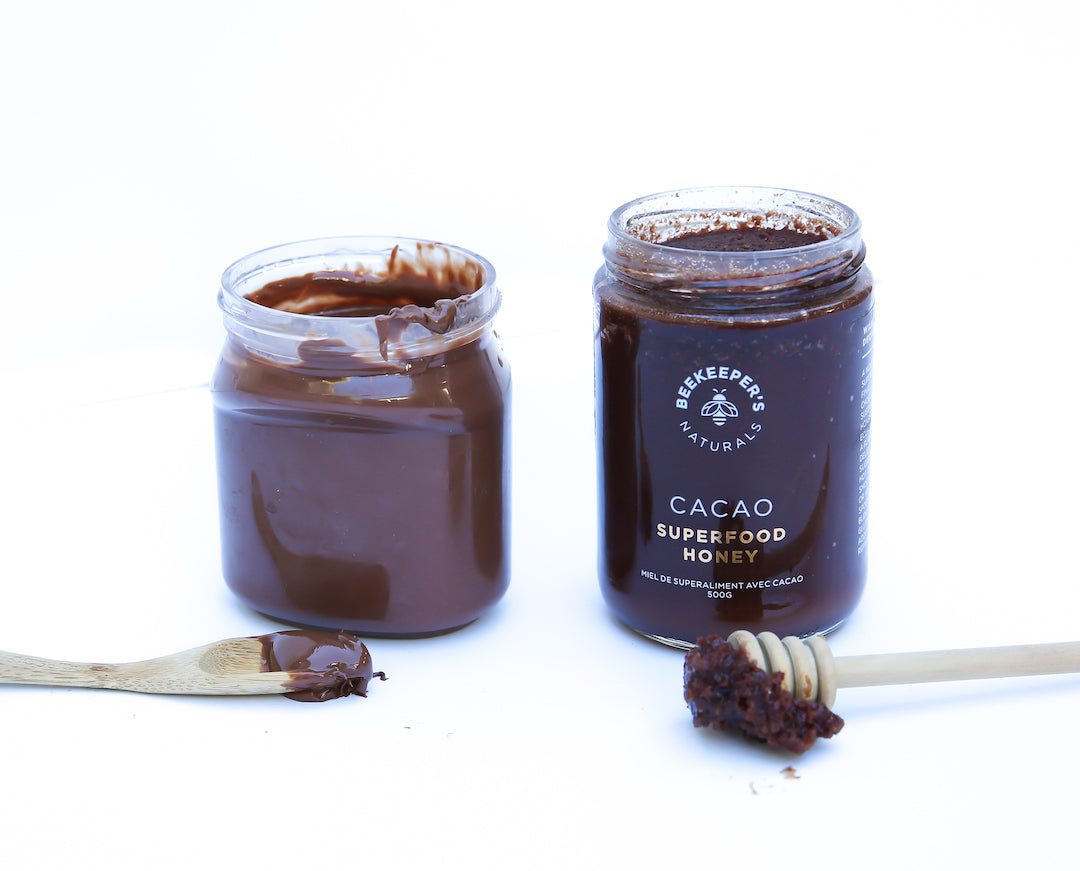Beekeeper, researcher, educator, conservationist, and an impassioned bee advocate, Sarah Red-Laird claims she was born a beekeeper. She's been fascinated with bees since she was a toddler, especially once she got a taste of fresh honeycomb, still warm from the hive. But it wasn't until she started working as a research assistant on various honey bee projects while at the University of Montana that she realized bees were her calling. The more she learned about bees, the more the love affair snowballed.
But Sarah isn't just a beekeeper. Besides tending to her hives, Sarah is the founder and executive director of the Bee Girl organization, an incredible nonprofit with a mission to educate and inspire communities to conserve bees, their flowers, and our food. Bee Girl projects are focused on regenerative beekeeping, bee habitat research and education, and kids’ programs.
And as if that isn't enough, Sarah also serves as the “Kids and Bees” program director for the American Beekeeping Federation, as well as the Western Apicultural Society’s 42nd president. And we highly recommend watching her excellent Ted Talk on how we can all help to save our pollinators. Needless to say, she is a pretty busy bee!
Luckily, Sarah had a spare moment to catch up with us and discuss pollinator habitat conservation, bee personalities, and the real dedication it takes to keep bees...

What is the most difficult thing about being a beekeeper/bee researcher?
I’ve realized that it’s so important to “pick rocks.”
Picking rocks out of a field is quite possibly one of the most boring, time-consuming, and back-breaking things I do in my habitat research fields. No one wants to do it. However, it gives me time to show down and think about what I’m doing. It gives me a chance to get to know the soil, and notice what’s flying by.
On the daily someone offers to “help” or “volunteer” with my organization. In their mind, they imagine a nature-scene boasting a whimsical sunset while being surrounded by happy bees and dipping our fingers into fresh honey. That is about 3% of what my year looks like. The other 97% is sitting in front of a computer, or in meetings, managing my team of worker bees (my human employees); moving very heavy things from one place to another over and over again; traveling to places far from home to talk to rooms full (and sometimes half-full) of people, who I’m not sure really understand what I’m trying to get across; and LOTS of being outside when it’s painfully cold, wet, hot, or hazardously smoky (I live in the wildfire-prone West).
When it comes down to what actually needs to be done for the organization, and the bees, very few people actually want to help. But I love every second of it. I guess my point is, being a beekeeper is literally and figuratively “picking rocks,” it’s a different breed of human who actually takes great joy in the reality of the gritty side of life and work, and I’m happy to be a part of this cluster.

What was your greatest fear and biggest barrier to entry about starting to keep bees?
What was your greatest fear and biggest barrier to entry about starting to keep bees?
My greatest fear was not being able to keep them alive! My first queen lived to be five, so I guess I did OK! The biggest barrier to entry was proving to Professor Bromenshenk and the others in the lab that I wasn’t a “typical” student. Many students before me came with the awe-struck inspiration that bees provide to many of us, but didn’t stick around once they realized the amount of work that goes into responsible beekeeping. It look over a year of emails, phone calls, and networking to work my way up to an interview. Almost a decade later, Mr. Debnam sits on my organization’s board of directors – so I think I’ve proven I’m serious at this point!
What surprised you the most in your first year as a beekeeper?
I was surprised to find that while the colony functions as a whole, each individual bee has her own personality. While I was working on a Proboscis Extension Response (PERS) study, I worked with honey bees one-on-one. It was amazing! Some were lazy, some were whip-smart, and some were hilarious.

How has working closely with bees changed your perception of nature or the world around us?
By working so closely with nature, I’ve come to understand that nature wants to be nature, and doesn’t like being manipulated. The more we work to bend the natural spectrum to our own will, the further we pull back the slingshot, aimed at our own faces.
Tell us three lessons that you’ve learnt from the bees.
1) I’ve learned that we all do better when we all do better, i.e. working for the greater good, the highest and best purpose for all, achieves maximum benefit.
2) The more I know, the less I know.
3) I can’t take anything personally, there are so many situations and factors completely out of my control.
Bonus → Nature, apiculture, and agriculture are messy and unpredictable, and that’s OK.

What is you favorite bee product and why?
Propolis! It’s a beautiful collaboration between plants and bees. Bees harvest the plant’s external immune system to make one for themselves and then we get to harvest a bit here and there to make cold and flu season more bearable. My regimen is a propolis tincture and Fungi Perfecti Immune XXX, and I’ve been sick only once in five years.
Are there any unique plant types in your area that produce a special variety of honey?
Our vetch honey is to die for! It has a light marshmallow flavor. Also meadowfoam is an interesting and unique honey. It is a dark to medium bodied honey that has notes of root beer.

There are major issues in finding and maintaining clean space for the bees across North America. Practices like monocropping and heavy pesticide usage have really affected our ecosystem. How have you worked to maintain clean bee habitats?
Honey bees are a challenging animal to keep, because their range is over 25 square miles. A beekeeper can’t control where they go, or what they get up to.
I have had some catastrophes with surrounding landscapes. A few years ago my “teaching apiary” was adjacent to 40 acres of irrigated hay pasture. It was interseeded with nitrogen fixers like clover and birds foot trefoil that the bees loved, and thrived more in this apiary than any other. Mites and viruses were in-check and the honey flow was phenomenal. Literally overnight, the plants and soil were ripped up, turned upside-down, fumigated with herbicide and planted into cannabis. This bee yard is now my worst (hive health and honey production-wise), and it’s a constant struggle to keep them alive.
There were two acres left, and the farm manager wasn’t interested in keeping them in hay anymore. So - I wrote a proposal to the land owner and offered to lease it for bee habitat. This has turned into a super fun years-long research project, trying to find the best “bee pasture” for our region. The “Regenerative Bee Pasture” project goals are to restore highly degraded pastureland into lush fields that will provide habitat for bees, feed livestock, regenerate soil, conserve water, and sequester carbon.
Once I feel I’m starting to get a handle on what to plant, and how to plant and steward it, I’ll work with my local conservation district, university extension station, and farmers and ranchers to implement the strategy.
The cannabis farm has now been abandoned, and I hope to work with the owner to restore the acreage and make it even better than before.
My best advice to other beekeepers is to get to know your neighbors. Establish a personal relationship with your local farmers, university staff, and research and conservation NGOs and government organizations. Work together for solutions that are positive and involve multiple wins for all sides.

Is there a neonicotinoid or other pesticide issue in your area? Is the government doing anything to reduce or ban the use of pesticides?
There are over 5,000 registered pesticides in Oregon, so I’m sure my bees come in contact with at least a dozen, or so, on a daily basis. My state government is working on a Pollinator Protection Plan, and Ramesh Sagili’s lab at Oregon State University is doing an amazing job helping farmers understand how to not poison bee. They’ve produced an app (Bee Smart) and a booklet that I use constantly as a reference while talking to land managers.
I don’t see a total ban of neonics in the future, but I do see good progress involving people talking to people to come to understand each other. In my view, this is the best way to develop solutions that will work for all.
Also, consumers need to drive the market to more sustainably, and regeneratively, produce foods. Farmers are much more willing to bend and respond to the market than to follow an order from the government.

Do you feel that people in your area are fairly conscious of the bees and their importance?
It’s been amazing to have worked in public education for the last 9 years. In the mid 2000’s the only thing people knew about bees was to be afraid of “killer bees”. At this point, people’s awareness of the plight of the bee is through the roof! The educated questions that come my way at events are impressive and heartwarming! I’m sure people who have been keeping bees for decades longer than me are awestruck, and maybe overwhelmed, with the amount of enthusiasm that has developed recently!
At this point, I think the main focus should be letting people know that they don’t have to get a beehive to “save the bees.” Planting flowers and cutting out pesticides will do much more to benefit bees and existing beekeepers.





